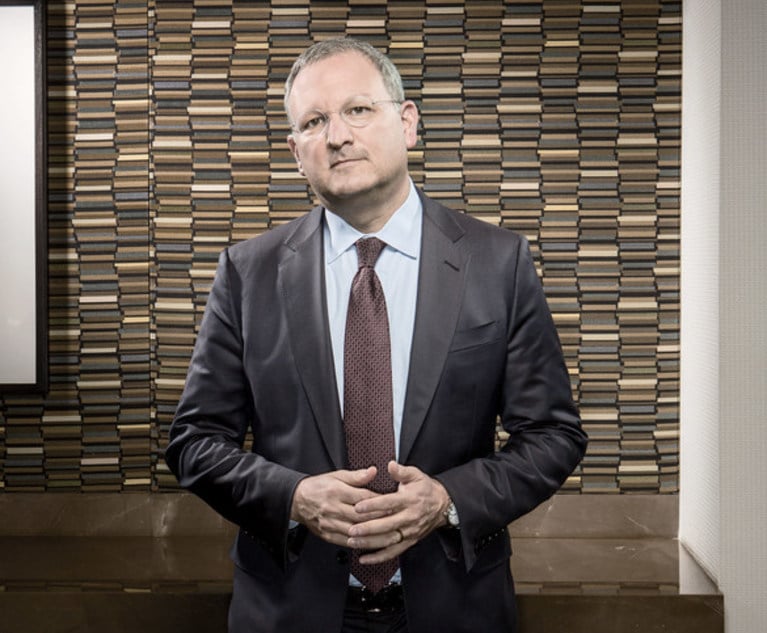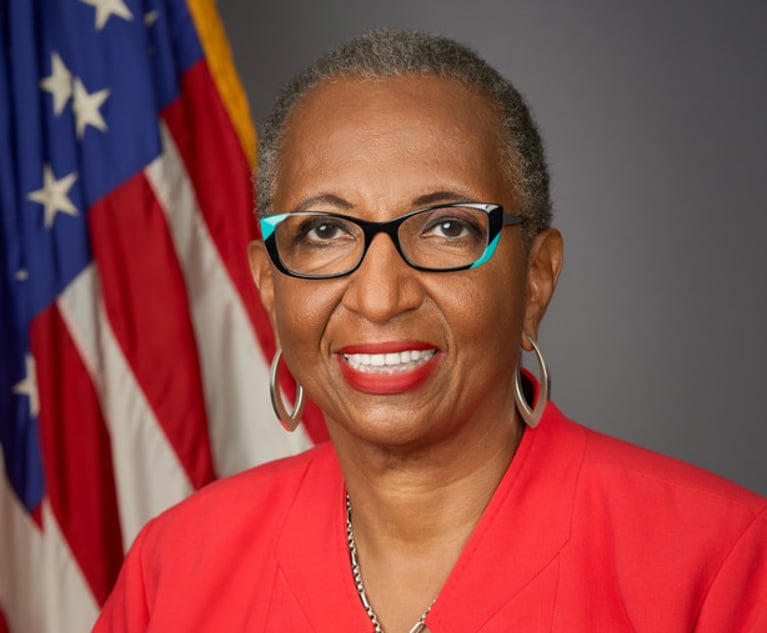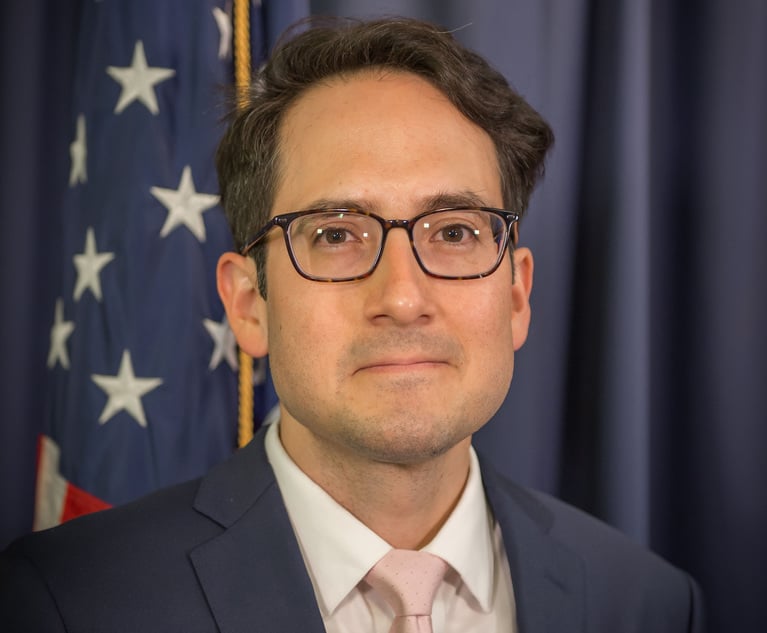IP: What to expect from the America Invents Act ... and when
A timeline of key provisions to watch over the next 18 months.
October 04, 2011 at 05:57 AM
3 minute read
The original version of this story was published on Law.com
On Sept. 16, President Obama signed into law the Leahy-Smith America Invents Act, which represents the first comprehensive revision of the patent laws since 1952. It will significantly impact patent litigation, patent prosecution and funding for the United States Patent Trademark Office (USPTO). Most of the law is scheduled to go into effect over the next year and a half. Key provisions and their effective dates are summarized below.
Effective Sept. 16:
- Restrictions on multi-defendant patent lawsuits: Unrelated defendants can be joined in a single lawsuit only if joint and several liability exists, or if the defendants engaged in the same infringing transaction/occurrence and there are common questions of fact.
- Reduction of qui tam false marking actions: Besides the U.S. government, only those that can show a “competitive injury” can sue for false patent marking.
- Prior commercial use defense expanded: The enforcement of patents issued on or after Sept. 16 may be subject to a prior commercial use defense.
- Less enforcement of the best mode requirement: An accused infringer can no longer challenge a patent's validity due to noncompliance with the best mode requirement.
- Unpatentable subject matter: No patents will be issued covering a tax strategy or a human organism.
- Fee setting authority: The USPTO is authorized to set all fees commensurate with its estimated costs and reduce most patent fees for “micro-entities” by 75 percent.
Effective Sept. 26:
- Fast track patent prosecution: Prioritize examination by paying an extra fee.
- Interim surcharge on patent fees: A 15 percent surcharge will be added to all fees until the USPTO makes a specific fee adjustment.
Effective Nov. 15:
- New patent application filing fee: An extra $400 fee is due if the application is not filed electronically.
Effective Sept. 16, 2012:
- Fewer consequences for not presenting advice of counsel at trial: Willful infringement and intent to induce infringement are not proven by the absence of advice of counsel.
- Post-grant review proceedings: Within nine months of a patent's issuance, a third party can challenge the patent's validity at the USPTO.
- Transitional procedure for post-grant review of business method patents: Entities alleged to infringe a business method patent may seek post-grant review at the USPTO.
- Supplemental review proceedings by inventor: An inventor may request consideration or correction of information in connection with a patent.
- Assignee can file patent application: An assignee can file a patent application in its own name.
Effective March 16, 2013:
- First-to-file: U.S. patent law shifts to a “first-to-file” system, meaning the first filed application for an invention has priority over later-filed applications.
- Expanded definition of prior art: Prior art includes all publicly available information and new types of information from outside the U.S.
- Derivation proceedings at the USPTO: A patent applicant may challenge the ownership of an earlier application derived from the applicant's work.
This content has been archived. It is available through our partners, LexisNexis® and Bloomberg Law.
To view this content, please continue to their sites.
Not a Lexis Subscriber?
Subscribe Now
Not a Bloomberg Law Subscriber?
Subscribe Now
NOT FOR REPRINT
© 2025 ALM Global, LLC, All Rights Reserved. Request academic re-use from www.copyright.com. All other uses, submit a request to [email protected]. For more information visit Asset & Logo Licensing.
You Might Like
View All
Upstart Insurer That's Wowing Industry Hires AIG Legal Exec to Help Guide Global Expansion
2 minute read
Trump Taps McKinsey CLO Pierre Gentin for Commerce Department GC

Fired NLRB Member Seeks Reinstatement, Challenges President's Removal Power

GOP Now Holds FTC Gavel, but Dems Signal They'll Be a Rowdy Minority
6 minute readTrending Stories
- 1Rejuvenation of a Sharp Employer Non-Compete Tool: Delaware Supreme Court Reinvigorates the Employee Choice Doctrine
- 2Mastering Litigation in New York’s Commercial Division Part V, Leave It to the Experts: Expert Discovery in the New York Commercial Division
- 3GOP-Led SEC Tightens Control Over Enforcement Investigations, Lawyers Say
- 4Transgender Care Fight Targets More Adults as Georgia, Other States Weigh Laws
- 5Roundup Special Master's Report Recommends Lead Counsel Get $0 in Common Benefit Fees
Who Got The Work
J. Brugh Lower of Gibbons has entered an appearance for industrial equipment supplier Devco Corporation in a pending trademark infringement lawsuit. The suit, accusing the defendant of selling knock-off Graco products, was filed Dec. 18 in New Jersey District Court by Rivkin Radler on behalf of Graco Inc. and Graco Minnesota. The case, assigned to U.S. District Judge Zahid N. Quraishi, is 3:24-cv-11294, Graco Inc. et al v. Devco Corporation.
Who Got The Work
Rebecca Maller-Stein and Kent A. Yalowitz of Arnold & Porter Kaye Scholer have entered their appearances for Hanaco Venture Capital and its executives, Lior Prosor and David Frankel, in a pending securities lawsuit. The action, filed on Dec. 24 in New York Southern District Court by Zell, Aron & Co. on behalf of Goldeneye Advisors, accuses the defendants of negligently and fraudulently managing the plaintiff's $1 million investment. The case, assigned to U.S. District Judge Vernon S. Broderick, is 1:24-cv-09918, Goldeneye Advisors, LLC v. Hanaco Venture Capital, Ltd. et al.
Who Got The Work
Attorneys from A&O Shearman has stepped in as defense counsel for Toronto-Dominion Bank and other defendants in a pending securities class action. The suit, filed Dec. 11 in New York Southern District Court by Bleichmar Fonti & Auld, accuses the defendants of concealing the bank's 'pervasive' deficiencies in regards to its compliance with the Bank Secrecy Act and the quality of its anti-money laundering controls. The case, assigned to U.S. District Judge Arun Subramanian, is 1:24-cv-09445, Gonzalez v. The Toronto-Dominion Bank et al.
Who Got The Work
Crown Castle International, a Pennsylvania company providing shared communications infrastructure, has turned to Luke D. Wolf of Gordon Rees Scully Mansukhani to fend off a pending breach-of-contract lawsuit. The court action, filed Nov. 25 in Michigan Eastern District Court by Hooper Hathaway PC on behalf of The Town Residences LLC, accuses Crown Castle of failing to transfer approximately $30,000 in utility payments from T-Mobile in breach of a roof-top lease and assignment agreement. The case, assigned to U.S. District Judge Susan K. Declercq, is 2:24-cv-13131, The Town Residences LLC v. T-Mobile US, Inc. et al.
Who Got The Work
Wilfred P. Coronato and Daniel M. Schwartz of McCarter & English have stepped in as defense counsel to Electrolux Home Products Inc. in a pending product liability lawsuit. The court action, filed Nov. 26 in New York Eastern District Court by Poulos Lopiccolo PC and Nagel Rice LLP on behalf of David Stern, alleges that the defendant's refrigerators’ drawers and shelving repeatedly break and fall apart within months after purchase. The case, assigned to U.S. District Judge Joan M. Azrack, is 2:24-cv-08204, Stern v. Electrolux Home Products, Inc.
Featured Firms
Law Offices of Gary Martin Hays & Associates, P.C.
(470) 294-1674
Law Offices of Mark E. Salomone
(857) 444-6468
Smith & Hassler
(713) 739-1250






